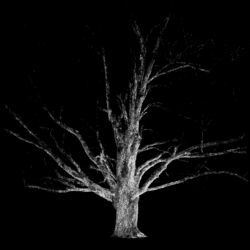Information Kit Relating to Non-Profit Corporations Consumer and Corporate Affairs Canada has released an information kit on the incorporation, etc. of a nonprofit corporation. This kit covers essentially all of the documentation required in order to incorporate a nonprofit corporation under Part II of the Canada Corporations Act. It includes such documents as model by-laws, a model application for incorporation, a checklist and a document providing for the surrender of the charter of a nonprofit corporation. While the information relates to Part II of the Canada Corporations Act, undoubtedly this kit would be extremely useful, even if the company were incorporated under provincial law covering the incorporation and operations of a nonprofit corporation.
Interpretation Bulletin In a special release dated January 27, 1989, several paragraphs of Bulletin IT-110R2 (Deductible Gifts and Official Donation Receipts) were amended to take into consideration the principal change made in the area of charitable donations as a result of tax reform, i.e., the substitution of a tax credit for a deduction in respect of donations made by individuals. Other than these changes, there does not appear to be any other substantive change in this particular interpretation bulletin.
Possible Forthcoming Changes Relating to the Taxation of Artists and the Arts In September 1988 the federal government responded officially to each of the seven recommendations in the Report of the Standing Committee on Communications and Culture which was reviewing the taxation of artists and the arts. The recommendations included a possible exemption of professional artists from the proposed new limitations dealing with the deductibility of home office expenses; a suggestion that there should be no recapture on the sale of depreciated musical instruments; and the provision of some form of income averaging for professional artists. In some cases, the government accepted the recommendations and in others rejected them on the grounds that no special treatment should be given to artists. However, the government is proposing to amend the Income Tax Act to allow organizations that are established and operated to promote the arts generally, or the welfare of artists in particular, to be given a special status allowing them to issue donation receipts (for tax purposes) in a manner similar to registered Canadian amateur athletic associations. Under this proposed change when it is enacted, the Minister of Communications will be empowered to certify such organizations as qualifying as special status organizations with the result that receipts which can be used for income tax purposes can be issued to donors.
A.D. Friedberg v. The Queen,89 D.T.C. 5015
In a surprising decision the Federal Court-Trial Division has held that a donor who acquires a collection of “cultural property” for a modest amount can donate it to a designated institution for purposes specified in the Cultural Property Export and Import Act and claim a tax receipt on the basis of the appraised fair market value of the collection.
The facts were that Mr. Friedberg’s accountant advised him that the Royal Ontario Museum (ROM) was seeking someone who would purchase a collection of antique Islamic textiles from the widow of a collector in New York and donate the collection to the ROM. After some negotiation, the widow of the collector agreed to sell the collection for $67,500. The ROM realized that this was an extremely good price considering the quality and extent of the collection and Mr. Friedberg agreed to acquire the collection and then donate it to the ROM. The collection was appraised by three separate appraisers at $528,125, $412,000 and $538,400. The Cultural Property Review Board then certified the property for $496,175 and Mr. Friedberg received a tax receipt for this amount Mr. Friedberg later acquired another collection for $12,000 that was certified for $229,437, the average of three appraisals. Revenue Canada disallowed the deduction of the amounts claimed by Mr. Friedberg and reduced the amounts accepted as a donation to the actual purchase prices.
The Federal Court-Trial Division allowed Mr. Friedberg’s appeal, holding that he had title to the collections and was legally in a position to donate them to the ROM. The donations were not “sham” transactions and the fact that Mr. Friedberg was simply seeking tax deductions and was not looking to acquire the collections for their intrinsic value, did not trouble the Court At the date of writing, this case has not been appealed. If the decision is final or is not overturned, it may offer interesting possibilities to designated institutions that are seeking to acquire cultural property. If such institutions can issue tax receipts to persons who are able to acquire cultural property for a price that is substantially less than the fair market value of the property, donors will often be able to more than finance the outlay made by them to acquire the property by the tax credit available in respect of the donation of the cultural property. As donations of cultural property may exceed 20 per cent of the donor’s income and still qualify for a credit for tax purposes, such gifts are particularly attractive. Before designated institutions implement fund-raising promotions based on this case, however, they should take care to confirm that the case has not been appealed, and that Revenue Canada will accept the decision.
Centre Reviews Legislation on Charities The Canadian Centre for Philanthropy has recently commissioned a Canada-wide study of legislation and regulations that affect charities. The project, directed by Matjorie Sharpe of the Metropolitan Toronto Community Foundation and chaired by Ian Morrison of the Canadian Association for Adult Education, will be completed in the early summer of 1989.
Legislation is being collected under 12 headings: the meaning of charity, the incorporation of charities, the supervision of charities, the activity of charities, public accountability and monitoring, reporting requirements, taxation, liability and insurance, remuneration of directors, fund raising, receiving and giving gifts, and holding or transferring property.
In addition to this strictly reportorial task, papers are devoted to specific issues such as federal and provincial sales taxes, the role of the Public Trustee in Ontario, the classification of gifts as charitable, gifts of property under the Cultural Property Export and Import Act, the effect on charities of the new Quebec Civil Code, Bill 54 in Alberta (the Volunteer Incorporations Act-see (1988), 7 Philanthrop. No. 3), and the remuneration of directors in Ontario.
The project is not at this point reviewing all of the common law affecting charities but rather is concentrating on assembling statutory material. It will nonetheless produce a fascinating and highly useful collection of the laws governing philanthropy in Canada. A draft report has now been circulated for comment to Associates of The Canadian Centre for Philanthropy. Consultations for Associates and others are also being held across the country with a view to soliciting comments and suggestions for revisions.
The final text, together with recommendations for reform, will appear about June 1989. The Philanthropist will publish a full account when the work of the project is completed.
MARY LOUISE DICKSON
McCarthy4 McCarthy, Barristers and Solicitors, Toronto
LAURENCE C. MURRAY
Thorne, Ernst4 Whinney, Chartered Accountants, Toronto


